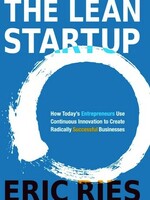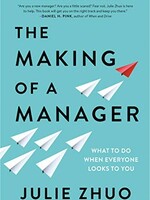The Agile Leader - Book Summary
How to Create an Agile Business in the Digital Age
Release Date: March 20, 2024
Book Author: Simon Hayward
Category: Management & Leadership
Release Date: March 20, 2024
Book Author: Simon Hayward
Category: Management & Leadership
In this episode of 20 Minute Books, we delve into "The Agile Leader" by Dr. Simon Hayward. Published in 2018, this insightful work explores the transformation leaders must undertake to navigate traditional organizations through the swift currents of the digital age. This book unpacks the concept of agility in the workplace and illustrates how adopting agile methodologies can empower corporate teams to not only compete with nimble startups but also to exceed ever-evolving customer expectations.
Dr. Simon Hayward, the author, is not only academically acclaimed, holding a doctorate in Business Administration from Alliance Manchester Business School, but also deeply respected in the professional sphere. A fellow of the Chartered Management Institute and a member of the British Academy of Management, Dr. Hayward brings a wealth of knowledge and practical insight to the table. His previous work, "Connected Leadership," was recognized as the WHSmith Business Book of the Month in January 2016, further solidifying his expertise in modern leadership practices.
"The Agile Leader" is an essential read for a diverse audience, from managers aiming to supercharge their team's productivity to entrepreneurs in search of a novel perspective on leadership. Additionally, management consultants seeking innovative insights into leadership agility will find this book to be a treasure trove of valuable information.
Join us as we explore how "The Agile Leader" offers a roadmap for leaders seeking to cultivate a more responsive, customer-driven business culture in an era defined by change.
Unlock the Secrets of Agility: Revolutionize Your Business Now
In the race of modern business, it's adapt or get left behind. The rapid evolution of technology and the rise of startups have shifted the terrain under the feet of traditional companies. These upstarts challenge the giants not with size but with speed, making agility the new measure of success. As a leader, how do you steer your enterprise to adapt, thrive, and stay ahead in this whirlwind of change?
The key to triumph lies within embracing agility, a concept that might be more familiar to tech enthusiasts but is now pivotal across all industries. This narrative unfolds the essence of transforming your organization into a nimble force, capable of making swift decisions without sacrificing quality. It's a journey through the strategies employed by leading organizations, offering a blueprint for enhancing your company's adaptability, your team's dynamism, and your leadership style.
Imagine a world where your business doesn't just respond to changes but anticipates them, where failure becomes a stepping stone rather than a setback, and where staying intimately connected with your customers' evolving needs drives every decision. This is the agile way—a philosophy that empowers you to think like a startup, no matter the scale of your operation.
Through this exploration, you'll learn why too many cooks in the decision-making kitchen can slow down your organization, how embodying the mindset of a nimble startup can unlock unprecedented growth, and what lessons business leaders can borrow from the world of sports to enhance their agility.
Transforming your approach demands a shift from the traditional play-it-safe strategies to adopting a laser-like focus on quick, yet strategic decision-making, risk-taking, and most critically, learning from failures quickly and efficiently.
As you embark on this path to agility, remember it's not just about speed; it's about smart, sustainable change. Ready your organization to not just face the future but to shape it. In this era of unprecedented change, agility is not just an advantage—it's a necessity.
Embrace Disruption and Connection: The Agile Leader's Playbook
Think agility, and you might picture an athlete in full flight—swift, adaptable, ready to change course at a moment's notice. This image carries profound lessons for today's business leaders facing an environment that shifts faster than ever before. Agility means more than quick reflexes; it encompasses a comprehensive transformation of your entire organization, mirroring the total coordination of an athlete in motion.
The essence of agile leadership lies in fostering two critical elements: disruption and connection.
In the dizzying pace of our digital age, navigating the VUCA landscape—characterized by volatility, uncertainty, complexity, and ambiguity—requires leaders to be profoundly connected. This connection isn't just about keeping pace; it's about understanding the nuanced changes in customer behavior and societal trends. As we venture deeper into the era of the Internet of Things, with billions of devices weaving an increasingly interconnected world, staying attuned is no longer optional. It's essential.
Consider the transformation seen in the retail sector, where traditional players have reinvented themselves to meet the digital consumer head-on. Innovations like online shopping platforms, same-day delivery, and augmented reality fitting rooms are shining examples of how connectivity can redefine an industry. But this shift isn't just about adapting; it's about leading the charge into the digital frontier.
Disruption, then, becomes the twin engine of agility alongside connection. It's about challenging the status quo, tearing down the old to make way for the new. The stories of Uber and Airbnb underscore this point vividly. Uber didn't just respond to customer needs; it reimagined urban mobility, disrupting the taxi industry with its groundbreaking app. Similarly, Airbnb transformed the hospitality sector, not merely by offering an alternative to hotels but by fostering a global community that redefined travel accommodation.
The lesson for leaders in any field is clear: agility demands more than reactive measures. It calls for a proactive stance, a willingness to disrupt and connect in equal measure. Just as an athlete anticipates the move of an opponent, agile leaders must foresee and shape the future of their industries. By marrying the forces of disruption with the power of connection, leaders can navigate the complexities of our modern world, steering their organizations toward success in an era of relentless change.
Learning Is Leading: The Agile Leader's Guide to Growth
Agility transcends the notion of mere physical or mental quickness; it embodies a combination of skills vital for overcoming challenges. Picture the agile athlete, adept not only in physical prowess but also in mental acuity, constantly learning from each game played. This same spirit of continuous learning and adaptability is indispensable for agile leaders in today's rapidly changing business landscape.
The hallmark of an agile leader is an insatiable curiosity and the drive to learn from those around them.
In the whirlwind of market shifts and technological advancements, understanding the evolving desires of consumers becomes paramount. A leader's ability to swiftly assimilate this information directly influences the organization's capability to innovate and remain competitive.
One of the most effective strategies for fostering a culture of learning is to embrace feedback. Whether it's insights into product reception or employee satisfaction, feedback is a goldmine of information that can guide strategic decision-making. Implementing a culture where feedback is actively sought, shared, and acted upon is crucial. Ensuring this feedback is delivered in a positive, constructive manner enhances its receptiveness, as the brain's positive response to such interactions can foster a more open and responsive attitude toward change.
However, feedback is just one aspect of the learning equation for agile leaders. In today's digital-first environment, staying abreast of technological trends is non-negotiable. Digital literacy, understanding and leveraging the latest technology relevant to your industry, becomes a key skill in an agile leader's arsenal.
Embarking on a journey to enhance digital literacy often leads to the reversal of traditional mentoring roles. In the digital mentorship model, it's the senior leaders who become the students, learning from the tech-savvy younger generation. This reversal not only bridges the knowledge gap but fosters a culture of mutual learning and respect across generations within the organization.
By adopting an approach that values continuous learning, feedback, and digital proficiency, agile leaders can sculpt an organization that not only adapts to change but thrives in it. Just as the agile athlete leverages every game as a learning opportunity, so must leaders in the business arena use every challenge as a stepping stone to greater knowledge, innovation, and success.
From Bureaucracy to Agility: Placing Customers and Clarity First
Transitioning a business from a sluggish operation to an agile powerhouse is akin to a sedentary individual deciding to become an athlete. Both processes entail shedding layers—whether of bureaucracy or lethargy—to uncover a more dynamic and responsive entity beneath. The journey from inertia to agility is fraught with challenges but holds the promise of transformational rewards.
The critical shift required for businesses to achieve agility is twofold: emphasizing clarity and centering on customer needs.
In the realm of agility, clarity acts like the North Star, guiding employees in decision-making and ensuring their actions align with the organization's strategic objectives. Without clear direction, the empowerment to make decisions can lead to disjointed efforts and uncoordinated initiatives. Employees, no matter how well-intentioned, may pursue personal goals at the expense of the organization's larger vision. Therefore, delineating roles, purposes, and overarching strategic goals becomes paramount. This clarity ensures that as bureaucratic layers are dismantled, the organization moves cohesively towards its aim, rather than descending into chaos.
Putting customers at the heart of operations marks the second cornerstone of business agility. Traditional corporations, with their inward-looking focus and complex bureaucracies, often lose sight of their most critical stakeholder: the customer. Decisions may be anchored in the past, reflecting what the company was once known for rather than what customers currently need or desire.
Breaking free from this historical inertia involves a conscious shift towards understanding and delivering value according to customers' current and future needs. It requires a willingness to engage in continuous dialogue with customers, testing new ideas and being prepared to pivot based on their feedback. This approach does not imply recklessness but rather controlled experimentation. Strategies like trialing new concepts with select customer groups enable companies to innovate with minimal risk, ensuring that any missteps have limited impact on overall customer satisfaction.
The path to agility is clear: dismantle the bureaucratic barriers that stifle decision-making and focus relentlessly on clarity and customer satisfaction. By understanding their roles within the strategic framework of the organization and prioritizing the needs of the customer above all, employees can act decisively and innovatively. In this way, businesses can transform from sluggish entities into agile competitors, ready to respond with precision to the ever-changing demands of the marketplace.
The Crucial Leap to Agility: Defining Goals and Sharpening Focus
Imagine an elite athlete whose single-minded pursuit of victory shapes every decision they make. The clarity of their goal—to win—dictates their daily routines, sacrifices, and actions. Drawing inspiration from this, imagine transforming an organization to mirror this level of focus and determination. This analogy beautifully encapsulates the essence of agility in the business realm.
At the heart of achieving business agility lies the establishment of clear, well-defined goals, followed by a commitment to prioritize activities that directly contribute to these objectives.
Setting these goals is the first step toward creating a blueprint for action. It involves discerning what the organization aims to achieve and then meticulously trimming away any activity that does not directly support these ambitions. This distillation process leaves behind a core set of priorities that become the organization's beacon, guiding all efforts and resources.
Agility demands not just the identification of priorities but a steadfast devotion to them. It's about eschewing distractions and the temptation to spread efforts thinly across multiple targets. Embracing a focused approach—zeroing in on a singular objective or a concise set of goals—ensures efficiency and prevents the dilution of efforts. Evidence from research underscores the inefficiency of multitasking, reinforcing the value of concentrated endeavor over fragmented attention.
Consider the transformation of Facebook towards becoming a mobile-first platform. In 2011, under Mark Zuckerberg's leadership, Facebook pivoted with unyielding focus towards enhancing its mobile presence. By discarding the superfluous and channeling efforts singularly towards mobilization, Facebook not only achieved its objective but also redefined its revenue model, with mobile advertising constituting a substantial portion of its earnings by the end of 2013.
However, the path to achieving such concentration is not without obstacles. Legacy procedures, deeply ingrained in the fabric of traditional corporations, often resist change. These established practices can pose significant challenges to prioritizing tasks that align with new strategic goals.
British Airways' transformation under Alex Cruz exemplifies overcoming legacy hurdles to enhance agility. When Cruz assumed leadership, the airline was burdened with cumbersome procedures and a focus on operational intricacies at the expense of customer experience. Through his leadership, Cruz championed simplicity and customer-centricity, pivoting British Airways towards greater competitive agility in the face of emerging low-cost carriers.
This narrative underscores a fundamental truth: business agility is predicated upon the clarity of objectives and a relentless focus on priorities. Emulating the discipline and dedication of an athlete, organizations can achieve agility by rigorously defining their goals and committing unwaveringly to the pursuit of those priorities.
Teamwork Transcends Talent: Crafting Agile Teams for Success
The essence of a truly effective team lies far beyond the sum of its individual members' talents. This becomes strikingly clear when we draw parallels with sports teams — where synchrony, collective purpose, and complementary skills pave the way to victory.
Consider the dynamics of a competitive rowing team, where diversity in roles — from the power-driven strokes of the rear rowers to the rhythm-setting front rowers and the strategic acumen of the cox — harmonizes to create a winning force. This synergy offers a profound insight: success stems not just from individual prowess but from how team members interrelate and pursue a common goal.
The cornerstone of a formidable team is, surprisingly, not found in the raw talent of its members but in their mutual interactions. Studies suggest that teams characterized by a spirit of cooperation and a collective aim outperform conglomerations of highly skilled individuals who prioritize personal goals over team objectives. In such loosely bound groups, competition among members often results in subpar outcomes, underscoring the vital role of teamwork in achieving exemplary results.
For teams to truly embody agility, members must be empowered to leverage their expertise through autonomous decision-making. The absence of senior managerial oversight can expedite processes, optimizing the team's overall performance. However, this ideal scenario is frequently obstructed by managers who, by centralizing decision-making, inadvertently impede the team's agile capabilities.
If you find yourself veering towards micromanagement, consider adopting a principle of restraint: intervene only in matters that unequivocally require your expertise. By transitioning from a direct overseer to a coach and advisor, you provide your team with the necessary data to make informed choices independently, thereby enhancing their efficiency and agility.
Another critical aspect of constructing agile teams is optimizing their size. The ideal team comprises roughly seven members, with a flexibility of plus or minus two, to maintain a balance between diversity of skills and the ease of communication. A team too small may lack the comprehensive skill set needed for its objectives, while an overly large team faces challenges in maintaining swift, effective communication, thereby diluting agility and decelerating decision-making processes.
In sum, crafting an agile team demands a recalibration of focus from individual brilliance to the quality of collaboration and the ability to operate with a unified purpose. By nurturing an environment that encourages autonomy, minimizes hierarchical impediments, and optimizes team size, leaders can forge teams characterized not only by their talent but by their capacity for collective success in a fast-paced and ever-evolving business landscape.
Mastering the Art of Decision-Making: Balancing Instinct and Analysis
In the world of decisions, not all are created equal nor are they approached in the same manner. Drawing insights from Daniel Kahneman's groundbreaking work, "Thinking Fast and Slow," we uncover the two distinct systems guiding our decision-making processes. System One operates on a rapid, instinctual level, while System Two demands more deliberate, analytical thought.
Imagine the life of a champion fencer, where victory hinges on a blend of strategic analysis and lightning-fast reflexes. This duality of thought is not limited to sports but extends to the realm of business leadership, where the stakes involve not just winning bouts but steering organizations towards success.
To navigate decision-making effectively, it's crucial to discern when to trust our gut instincts and when to slow down for a more calculated analysis.
The allure of System One thinking is undeniable, given its immediacy and ease. It's our go-to for quick judgement calls, yet this reliance can be a double-edged sword. The danger lies in overconfidence, a tendency to overtrust our instincts without adequately weighing the evidence or considering diverse perspectives.
As leaders, embracing a more measured approach is essential, especially in high-stakes scenarios. This involves a conscious effort to absorb pertinent data and seek expert opinions, thereby nurturing a culture of more rational decision-making.
The New Zealand rugby team's practice of switching mental states—between the reactive "red head" and the composed "blue head"—illustrates the power of mindful thinking. Techniques like foot stamping serve as physical cues to transition from instinctive reactions to a state of mental clarity, enabling precise and focused actions even under pressure.
It's also critical to recognize the pitfalls of leaning too heavily on analytical thinking. Analysis paralysis epitomizes the dilemma of overthinking, where the quest for perfection in decision-making leads to stagnation. This state of perpetual deliberation can impede the agility required in today’s fast-paced business environment, overlooking the importance of experimentation and risk-taking.
In summary, mastering the art of decision-making in leadership involves harmonizing our instinctual and analytical capacities. It's about finding the right balance: knowing when to rely on the swift judgements of System One and when to engage the more thorough, methodical process of System Two. This equilibrium not only aids in making informed decisions but also ensures leaders can adapt and respond effectively in a variety of contexts, from the fencing piste to the boardroom.
Igniting the Agile Spark: Empowering Your Team for Change
Transitioning an organization towards agility resembles kindling the energy and enthusiasm needed to fill a dance floor at a wedding. It often starts with one daring individual, but the true momentum builds when others join in, leaving their reservations aside. This journey towards organizational agility, while challenging, is crucial and begins with engaging your team in the vision of what could be.
Change, by its nature, stirs anxiety and resistance. However, the stark reality is that without your team's full engagement, efforts towards agile transformation risk falling among the 75 percent of organizational change initiatives that stumble due to a lack of staff buy-in. Staff feel estranged from the process, turning potential allies into obstacles.
To champion agility, you must cultivate both the skills necessary for agile practices and the intrinsic motivation to embrace this change. Explain the promised land that agility brings: a work environment where everyone has a stake in decision-making and where teams operate at the peak of efficiency.
Yet, evangelizing agility doesn't stop with the rank and file. Senior management, often steeped in the traditions of hierarchical and linear operations, may find the notion of agility particularly foreign or even threatening. For leaders accustomed to control, the shift towards the decentralization inherent in agile philosophies requires a significant mindset adjustment.
Agility training programs can be instrumental for leaders to unlearn outdated modes of operation and embrace the dynamic nature of agile management. Through targeted exercises, such as solving complex problems in small groups under tight deadlines, these programs break down old mental barriers in a controlled, supportive environment.
Beyond formal training, embodying agility in your daily actions speaks volumes. Display the courage to fail and allow your team to witness these moments. Such transparency demystifies failure, showcasing it as a stepping stone rather than an endpoint. Coupled with a routine practice of soliciting feedback, this approach not only garners insights on the agility initiative's reception but also fosters a culture where continuous improvement is the norm.
In essence, igniting the spark of agility within your organization is a multifaceted endeavor. It demands imparting essential skills, nurturing the desire for change, challenging entrenched leadership philosophies, and, perhaps most importantly, leading by example. As you embody the principles of agility, you set the stage for your team to dance alongside you, transforming the organization into a dynamic, responsive entity ready to thrive in today's ever-evolving business landscape.
Embrace Agility: Your Pathway to Thriving in a World of Disruption
In an era defined by rapid technological advancements and constant market shifts, the ability to adapt swiftly isn't just an advantage—it's a necessity for survival. The landscape is dominated by startups capable of pivoting at a moment's notice, setting a new standard for flexibility and innovation. This transformational environment challenges established businesses to rethink their strategies and inject a dose of startup mentality into their operations.
The journey toward organizational agility demands a comprehensive overhaul of traditional structures. The key lies in dismantling the layers of bureaucracy that hinder swift decision-making and stifling innovation. Empowerment emerges as a pivotal theme, with companies encouraged to decentralize authority and enable employees at all levels to take initiative and make impactful decisions.
However, empowerment alone isn't sufficient. It must be anchored in a compelling and shared vision that guides the collective efforts of the team. This vision serves as a beacon, ensuring that while the pace of work accelerates, the direction remains clear and purposeful. Every stride forward, every quick pivot, and every innovative leap should align with this overarching goal, ensuring that speed and agility lead to meaningful progress.
In summary, the transformation into an agile organization requires shedding outdated practices, fostering a culture of empowerment, and rallying around a unifying vision. By adopting these strategies, even the most established companies can reposition themselves for success in the unpredictable terrain of the modern business world. Welcome to agility—your key to thriving amidst disruption.



